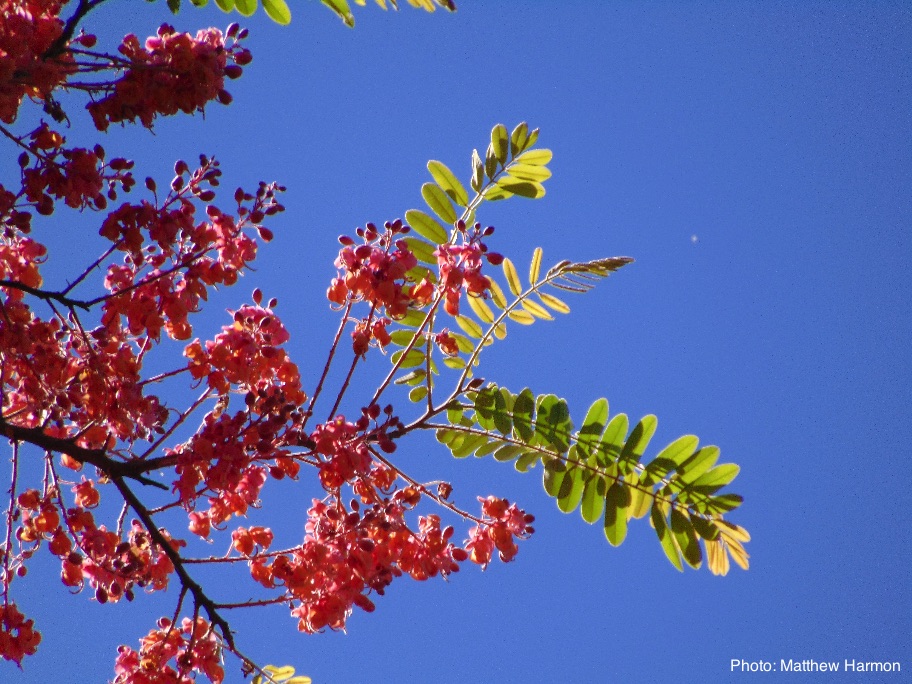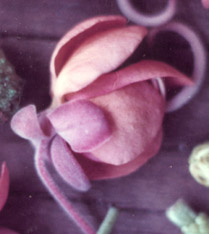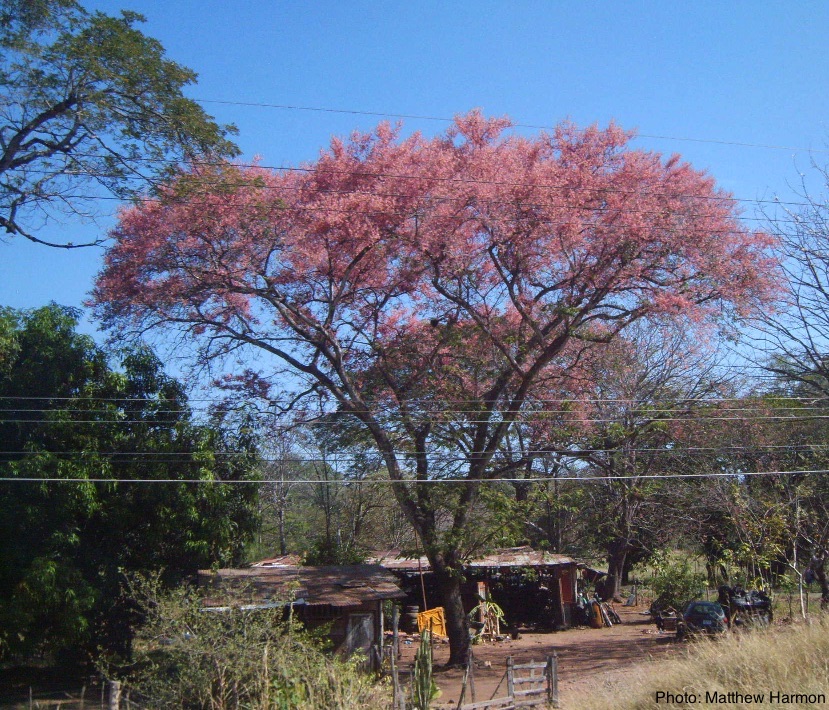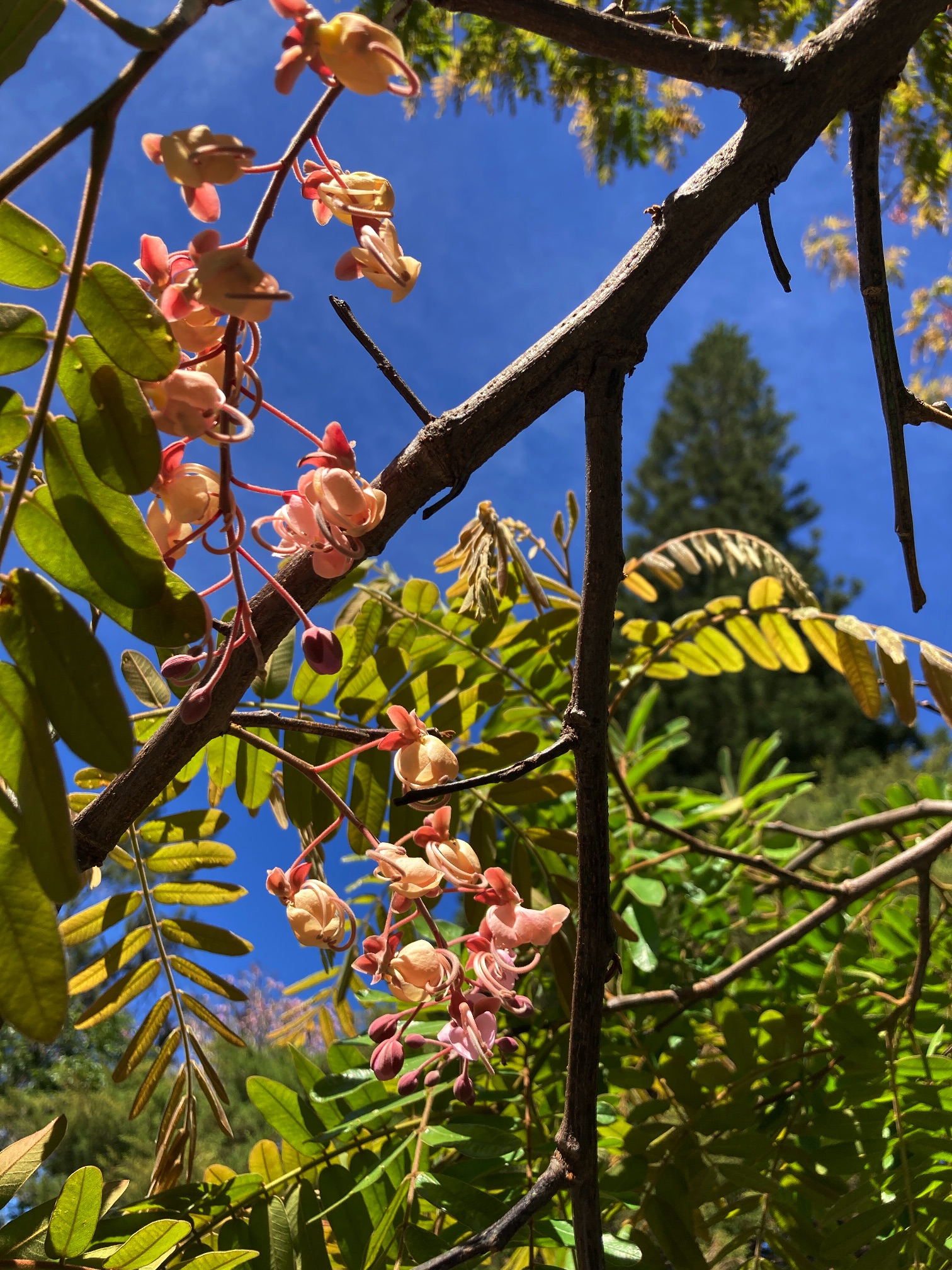Cassia grandis L. f.
Caesalpiniaceae CARAO, STINKING TOE
Tree: Rare deciduous subcanopy tree (15-25 m) notable for its striking, pastel-colored flowers as well as its persistent, strong-smelling, and cylindrical woody pods. This tree has been widely planted as an ornamental in Costa Rica, thanks to its showy, pastel-colored flowers. Nevertheless, I have never seen it growing in the wild in the dry and humid forests of Costa Rica’s Pacific Slope.
Description: Carao’s trunk is usually straight and more or less cylindrical, with large trees having diameters approaching 60 cm. Branching is profuse and a dense, umbrella-shaped canopy is produced by them. Smooth pale gray bark, sometimes marked by inconspicuous encircling rings, is typical of the species. Carao leaves are paripinnately compound, alternate, and large (30 cm by 10 cm), each with about 16 pairs of leaflets. Narrowly elliptical in form, the leaflets (4 cm by 1.5 cm) sport some pubescence as well as a distinctive, two-toned coloration: they are green above and maroon below. Foliage begins to fall from the trees early in the dry season (January), leaving them completely bare by March. The generation of new foliage resumes in April.
During Carao’s short leafless period, the tree produces abundant flowers (3 cm) in long axillary racemes. Their unusual pastel shades of pink and orange engulf the entire crown and create a welcome splash of color during the summer’s driest month. Each flower has five large, lavender sepals; an equal number of rounded, peach colored petals; three large stamens (flanked by various smaller staminal appendages; and a long, curved pistil. The petals lack a uniform shape, the uppermost one being particularly modified and having a yellow patch at its proximal end. Typical in form of all Cassias, these blossoms are among the most attractive that the tropical forest has to offer. Flowering occurs between March and April.
Fruits begin to grow immediately, as petals are shed and the long pistils begin to expand. By June, they are visible as green, shoelace-sized strings dangling below the new foliage. They reach full size in September, and begin to mature – turning brown and drying – during this month. Each woody, indehiscent fruit is long (to 40 cm or more), wide (5-6 cm), cylindrical in shape and contoured by elevated striations and ridges. Inside, transversely oriented compartments with papery walls contain flattened, round, tan-colored seeds (1.5 cm) as well as large amounts of thick, strong-smelling, dark-colored honey. This fluid, whose odor can be characterized as unpleasant at best (as the common name implies), is easily detected when pods have fallen and broken under the trees. Fruits persist in the crown all year, and only occasionally become dislodged in what amounts to a slow and haphazard process. Harvests – determined to be the time of fruit maturation (and not fruit-fall) for this species – occur from September through December. Seeds germinate immediately upon their liberation from the thick, protective pods.
Similar Species: The long, pinnately compound Carao leaves with rounded, elliptical leaflets are unique among Manuel Antonio flora, as are the nearly omnipresent, cylindrical pods.
Natural History: Carao flowers are pollinated by insects. Its fruits, however, appear to have no native dispersing agent. The pods persist in the trees and on the ground until they rot, and are never transported far from the parent tree. (A single coati was seen eating the immature pods of one tree on several occasions, but this was probably aberrant behavior rather than an important dietary practice of this animal.) A possible explanation for this phenomenon coincides with that recounted in the description of the Guapinol tree – that large Pleistocene mammals, now extinct, used to consume these and other, large, woody fruits. With their disappearance, many species may have lost their only effective seed dispersal vectors (Janzen & Wilson, 1983).
As suggested in the description above, Carao seeds and compartments are oriented at right angles to the main longitudinal axis of the pod – (i.e. transversely). This design, along with the large, curved pistil of the flower, are unique and identifying characteristics of the large (pantropically distributed) Cassia genus.
Uses: The pungent honey found abundantly in Carao pods is sometimes mixed with milk and used as a refreshment. It is said to have medicinal properties and, among other things, to help fight anemia and add iron to the blood. Allen (1956) indicates that it is also a purgative. A liquid antiseptic can be obtained from Carao roots and leaves, while its flowers are used in other household remedies (Witsberger, 1982). Carao is widely planted as an ornamental tree.
Distribution: In Manuel Antonio, Carao trees were planted in the old orchard area around the main administration building and near the beginning of the Perezoso trail. The tree ranges from southern Mexico, to Surinam and Brazil.
Photos: Tree Tree2 Trunk Trunk2 Leaf Leaf2 Flower Flower2 Flower3 Fruit





